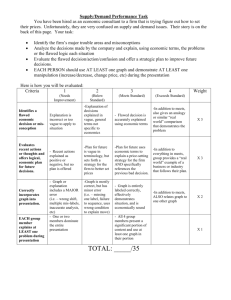Safe Compositional Network Sketches: NetSketch Tool Implementation ∗ Nate Soule
advertisement
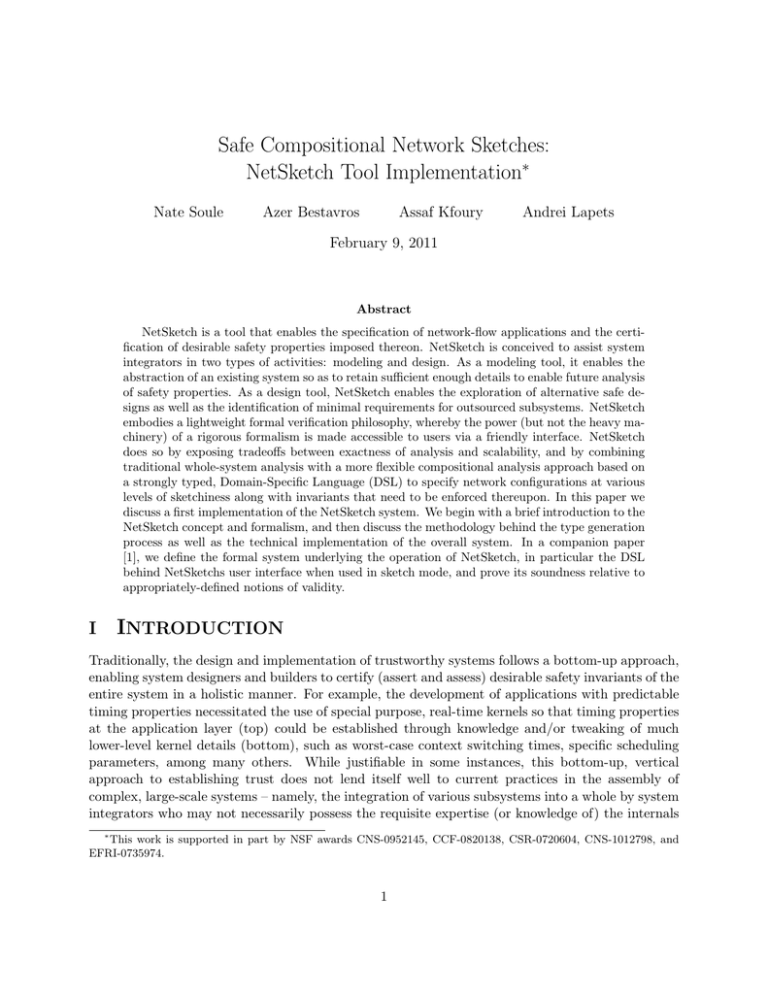
Safe Compositional Network Sketches:
NetSketch Tool Implementation∗
Nate Soule
Azer Bestavros
Assaf Kfoury
Andrei Lapets
February 9, 2011
Abstract
NetSketch is a tool that enables the specification of network-flow applications and the certification of desirable safety properties imposed thereon. NetSketch is conceived to assist system
integrators in two types of activities: modeling and design. As a modeling tool, it enables the
abstraction of an existing system so as to retain sufficient enough details to enable future analysis
of safety properties. As a design tool, NetSketch enables the exploration of alternative safe designs as well as the identification of minimal requirements for outsourced subsystems. NetSketch
embodies a lightweight formal verification philosophy, whereby the power (but not the heavy machinery) of a rigorous formalism is made accessible to users via a friendly interface. NetSketch
does so by exposing tradeoffs between exactness of analysis and scalability, and by combining
traditional whole-system analysis with a more flexible compositional analysis approach based on
a strongly typed, Domain-Specific Language (DSL) to specify network configurations at various
levels of sketchiness along with invariants that need to be enforced thereupon. In this paper we
discuss a first implementation of the NetSketch system. We begin with a brief introduction to the
NetSketch concept and formalism, and then discuss the methodology behind the type generation
process as well as the technical implementation of the overall system. In a companion paper
[1], we define the formal system underlying the operation of NetSketch, in particular the DSL
behind NetSketchs user interface when used in sketch mode, and prove its soundness relative to
appropriately-defined notions of validity.
I
INTRODUCTION
Traditionally, the design and implementation of trustworthy systems follows a bottom-up approach,
enabling system designers and builders to certify (assert and assess) desirable safety invariants of the
entire system in a holistic manner. For example, the development of applications with predictable
timing properties necessitated the use of special purpose, real-time kernels so that timing properties
at the application layer (top) could be established through knowledge and/or tweaking of much
lower-level kernel details (bottom), such as worst-case context switching times, specific scheduling
parameters, among many others. While justifiable in some instances, this bottom-up, vertical
approach to establishing trust does not lend itself well to current practices in the assembly of
complex, large-scale systems – namely, the integration of various subsystems into a whole by system
integrators who may not necessarily possess the requisite expertise (or knowledge of) the internals
∗
This work is supported in part by NSF awards CNS-0952145, CCF-0820138, CSR-0720604, CNS-1012798, and
EFRI-0735974.
1
of the subsystems they rely on. This horizontal approach to system design and development has
significant merits with respect to scalability and modularity, but at the same time it poses significant
challenges with respect to aspects of trustworthiness – namely, certifying that the system as a whole
will satisfy specific invariants (e.g., related to safety, security, and timeliness). While it is possible to
reason about and/or automatically infer the exact (tight) conditions under which safety constraints
are satisfied for small-scale (toy), fully-specified subsystems, the same cannot be expected for largescale, complex systems. Thus, in that context, we recognize three specific challenges that the work
we present in this paper aims to mitigate.
Exposing Tradeoffs: The environments and tools supporting large-scale system integrators must
expose the inherent tradeoff between the exactness of safety analysis with respect to the specificity
of the underlying subsystems, and the computational complexity necessary for automated analysis.
For example, it should be possible for a system integrator to under-specify, or sketch whatever
guarantees or constraints are expected to hold in a subsystem, and yet expect a level of support
for system-wide safety analysis that is commensurate with the provided details. Such a capability
would enable system integrators to establish minimal subsystem requirements for system-wide safety
properties to hold. Similarly, it should be possible for a system integrator to escalate the automated
analysis of safety properties based on the computational cost of such an analysis, perhaps opting
for sketchier but cheaper analysis for less critical functionalities (or early on in the design phase).
Lowering the Bar: Support for safety analysis in design and/or development environments must
be based on sound formalisms that are not specific to (and do not require deep knowledge of) particular domain expertise. As we alluded earlier, while acceptable and perhaps expected for vertically
designed, smaller-scale (sub)systems, deep domain expertise cannot be assumed for designers of
horizontally-integrated, large-scale systems. Not only should the underlying formalism be domainagnostic, but also it must be possible for the formalism to act as a unifying glue across multiple
theories and calculi. In particular, such a formalism should enable system integrators to manipulate results obtained through multiple, less accessible domain-specific expertise (e.g., using network
calculus to obtain worst-case delay envelopes, using scheduling theory to derive upper bounds on
resource utilizations, or using queuing theory to derive steady-state average delays). In doing so,
we lower the bar of expertise required to take full advantage of such domain specific results at the
small (subsystem) scale, while at the same time enabling scalability of safety analysis at the large
(system) scale.
Enabling Compositional Network Flow Analysis: Most large-scale systems are modeled/viewed
as interconnections of subsystems, or gadgets, each of which is a producer, consumer, or otherwise
a regulator of flows that are characterized by a set of variables and a set of constraints thereof, reflecting inherent or assumed properties or rules for how the gadgets operate (and what constitutes
safe operation). In a way, we argue that system integration can be seen primarily as a network flow
management exercise, and consequently that tools developed to assist in modeling and/or analysis
recognize and leverage this view by enabling compositional analysis of networks of gadgets to allow
for checking of safety properties or for the inference of conditions or constraints under which safe
operation can be guaranteed.
Towards the above-mentioned goals, in this paper we propose a methodology for the specification
and analysis of large network flow systems. In section II, we highlight the prominent features of
2
this methodology and of the formalism upon which it is based. Next, in Section III, we present a
design (modeling and analysis) tool, called NetSketch, which we have developed in support of this
methodology. In Section IV we look at the design decisions behind the type generation algorithms
used to support compositional analysis. Section V covers the technical implementation details of
the system. We conclude the paper with Section VI, a summary of current and future work for this
implementation.
II
THE NETSKETCH FRAMEWORK AND FORMALISM
In this section, we overview the salient features and the formal underpinnings of NetSketch. A
significantly more detailed treatment of the formalism underlying NetSketch (including proof of its
soundness) is presented in a companion paper [1].
Compositional Analysis in NetSketch: As a tool, Net- Sketch supports compositional (in
contrast to whole-system) analysis, which is additionally incremental (distributed in time) and
modular (distributed in space). Schematically and somewhat simplistically, we can contrast wholesystem and compositional analyses according to Figure 1, where JxK denotes the analysis of object x,
⊗ an associative operation for connecting two components of a larger network, and * an associative
operation for combining two analyses. Here it is important to note that for an analysis to be
compositional, it must allow inter-checking of gadgets to happen in any order, thus enabling more
flexible patterns of development and update. This stands in sharp contrast to modular analysis,
which may prescribe a particular order in which the modules have to be analyzed.1
Gadgets
A
A⊗B⊗C
A⊗h i⊗C
A ⊗ B0 ⊗ C
...
Whole-system
Compositional analysis
=
JAK
JA ⊗ B ⊗ CK
=
?
JA ⊗ h i ⊗ CK ?? =
JA ⊗ B 0 ⊗ CK
=
...
JAK
JAK ? JBK ? JCK
JAK ? Jh iK ? JCK
JAK ? JB 0 K ? JCK
...
Figure 1: Contrasting whole-system and compositional analyses.
Analysis of Incomplete or Sketchy Specifications: By its nature, whole-system analysis
cannot be undertaken if a gadget (such as B in Figure 1) is missing or if it breaks down (indicated
by the double question marks ??). Moreover, if the missing gadget is to be replaced by a new one
(B in Figure 1), whole-system analysis must be delayed until the new gadget becomes available for
examination and then the entire network must be re-analyzed from scratch. If we are interested
in certifying that a particular invariant is preserved throughout the network without running into
1
A good example of the difference between modular and compositional analysis is provided by type inference for
ML-like functional languages. Type inference is a particular way of analyzing programs statically, one of several
closely related approaches available today. ML-like type inference is modular but not compositional.
3
the limitations of whole-system analysis – specifically, inability to deal with incomplete or sketchy
topologies and/or incurring the cost of having to re-examine the entire network – and if we can
formalize this invariant using type-theoretic notions at the interfaces of gadgets (denoted by h i
in Figure 1), then we can adopt the alternative approach of compositional analysis, which is not
invalidated by the presence of holes (the empty interfaces in Figure 1). Simply put, one can think
of a hole as a placeholder where a system integrator can place different gadgets satisfying the same
interface types, interchangeably and at different times.
Our schematic comparison above, between compositional and whole-system analyses, calls for
an important proviso if we are to reap the benefits of the former. The cost of combining two
analyses (via the operation * in Figure 1) should be significantly smaller – specifically, below a
computational complexity that is acceptable to the user – than the cost of combining two networks
(via the operation ⊗ in Figure 1) and then analyzing the combination again from scratch. However,
even with that proviso and the additional proviso that all the pieces (gadgets) of a network are in
place so that a whole-system analysis is at all an option, it will not be that compositional analysis
always wins over whole-system analysis. An analysis – any analysis – is of a few properties of interest
and, as such, an abstraction of the actual network. An analysis determines conditions under which
the network can be operated safely (relative to appropriately defined safety criteria). Within the
parameters and limits of the modeling abstraction, an exact analysis is one that determines all
conditions of safe operation. An exact analysis typically requires whole-system analysis and, as
such, may be very expensive. But will its cost always outweigh its benefits? It depends. Reverting
to a compositional and computationally feasible analysis may force additional abstraction, at the
price of perhaps excessive and unacceptable approximation in the results, as we shall illustrate
later. An approximate analysis will typically determine a proper subset of the conditions of safe
operation and, as such, will be sound but not complete. The tradeoff offered to users will be
between completeness or precision of results (typically via exact and whole-system analysis) and
computational feasibility (typically via approximate and compositional analysis).
A Domain Specific Language (DSL) for Sketching Network Flow Problems: Each junction (or node) of a network may impose constraints on its respective inputs and outputs; the
topology coupled with its entire constraint set form an exact model. A whole-system analysis of
the network must solve the constraint set for the given topology. Our compositional approach uses
types to approximate (i.e., are sketched from) the constraints on each nodes interfaces. Our DSL
is used to describe the connectivity of nodes (and holes) and to infer and check the types.
To illustrate and motivate the need for our DSL, consider a particular network flow application,
namely vehicular-traffic networks, where types of interest are velocity types and density types. A
simple version of such types can be formalized as non-empty intervals over the natural numbers, each
denoting a range of permissible velocities or a range of permissible densities. Velocity and density
types can be inferred in an inside-out fashion, starting from the constraints regulating traffic at
each of the nodes in the network. Such constraints can be formalized as equalities and inequalities
of polynomial expressions over velocity and density parameters.
Suppose M and N are traffic flow networks of some sort – here traffic flow may equally refer to
the flow of packets in a communication networks, the flow of data tuples in a stream database, or the
flow of vehicles in a network of roads. Suppose M has the same number n of output (exiting) links
as N has of input (entering) links, and both are given as ordered sequences of length n. Suppose
M: (In1 , Out1 ) and N : (In2 , Out2 ) are typings of M and N assigning appropriately defined types
to their input/output links. The formal syntax of our strongly-typed DSL is defined by rules of the
4
form shown in Figure 2.
CONNECT :
Γ ` M:(In1 ,Out1 ) Γ`N :(In2 ,Out2 )
Γ ` M N :(In1 ,Out2 )
where if Out1 = hσ1 , ...σn i and In2 = hτ1 , ...τ2 i then σ1 <: τ1 , ...σn <: τn
LET0 :
Γ ` M1 :(In1 ,Out1 )... Γ`Mn :(Inn ,Outn ) Γ,X : (In0 ,Out0 )`N :(In,Out)
Γ ` Let X ∈{M1 ,...,Mn } in N :(In,Out)
where In1 = ... = Inn = In0 and Out1 = ... = Outn = Out0
Figure 2: Examples of two rules from NetSketch DSL Specification.
The side condition of the rule CONNECT , as that of every rule, is written right after it. To
safely connect the output links of M to the input links of N , this side condition requires that the
output types of M are subtypes of the corresponding input types of N . Figure 2 shows another
rule for the LET0 construct, which formalizes the idea that, in a hole X of a network N , we can
place at will any of n different networks { M1 . . . , Mn } as long as they satisfy the same interface
types.
The above two rules are presented to illustrate the nature of NetSketch underlying formalism.
Refinements and generalizations of these two rules, as well as several other rules, which we employ
under-the-hood from within the tool, constitute the formalism that underlies NetSketch. Collectively, they define the formal syntax of NetSketchs network flow DSL.2
With a DSL and constraints of the form just described, we can enforce various desirable properties across, for example, a vehicular-traffic network, such as no backups (traffic is not piling up
at any of the links entering a node at any time), fairness (there is no link along which traffic is
permanently prevented from moving, though it may be slowed down), conservation of flow (entering
traffic flow in a network is equal to exiting traffic flow), no gridlock (mutually conflicting traffics
along some of the links ultimately result in blocking traffics along all links), etc. There is more than
one reasonable way of formalizing the semantics of network typings. We consider two, corresponding
to what we call weak validity and strong validity of typed specifications. Let M: (In, Out) be a
typed specification for network M, where In is an assignment of types to the input links and Out
an assignment of types to the output links:
• M : (In, Out) is weakly valid just in case, for every traffic entering M, if the traffic satisfies
the input types In, then there is a way of channeling traffic flow through M, consistent with
its internal constraints, which will satisfy the output types Out.
• M : (In, Out) is strongly valid just in case, for every traffic entering M, if the traffic satisfies
the input types In, then every way of channeling traffic flow through M, consistent with its
internal constraints, will satisfy the output types Out.
Both kinds of validity are meaningful. The first presumes that nodes in the network communicate
and cooperate, or that there is a network administrator with global knowledge, to optimally direct
traffic through the network. The second presumes instead that nodes in the network are autonomous
systems with restricted communication between them or communication limited to their immediate
neighbors. These definitions are made precise and also more general, in[1], including notions of
soundness and its related proof.
2
Interested readers are referred to a companion paper[1] for a full specification of the NetSketch formalism.
5
From Modules and Gadgets to Network Sketches: In our formalism, a module corresponds
to the basic building block of a flow network. Modules are fully specified in the sense that exact
(tight) constraints characterizing their safe operation (e.g., invariants relating parameters associated
with their input and output links) are known a priori.3 NetSketch gadgets are inductively defined:
A module is a (base) gadget, a hole is a gadget, and any interconnection of gadgets is itself a
(network) gadget. For ease of exposition, we use network to refer to a network gadget.
The definition of a network implies that (unlike modules), networks admit incomplete specification by allowing for holes. More importantly, networks may be typed in the sense that specific
constraints or invariants at their interfaces do not have to be exact – i.e., such type constraints
may allow for looser bounds than what is absolutely necessary. As such networks can be seen as
approximations of the systems they model, and it is in that sense that they constitute sketches of
the system being modeled or analyzed. Such approximations may arise as the result of trading off
whole-system for compositional analyses, and/or trading off exactness of analysis for computational
efficiency and scalability. As we alluded before, exposing these tradeoffs is one of the main design
goals of NetSketch.
III
THE NETSKETCH TOOL
The NetSketch formalism has been partially implemented by the current version of the NetSketch
tool. The NetSketch tool offers users the ability to visually create and define modules, and create
connections among them. Subsets of connected gadgets (networks) may then be selected for inclusion in the type generation process. This paper describes the state of the tool as of its first release
which captures many of the core features of NetSketch, but leaves others to future implementations.
Section VI describes the functionality yet to be built. The tool can be found under Projects →
NetSketch at the following URL: http : //www.cs.bu.edu/groups/ibench/.
Figure 3 shows a screen of the NetSketch tool in action. Depicted are three gadgets from the
domain of vehicular traffic: a merge, a fork, and a 2-way cross intersection. The screen of the tool
is divided into two main areas, with a menubar running along the top edge. The middle section
of the screen represents the canvas, onto which users will place modules and create connections
between these modules to create networks. The bottom section of the screen presents the details of
the currently selected gadget.
A user defines a network topology by creating new modules. This can be accomplished by
creating a new module from scratch (i.e., no ports or constraints defined), or by selecting from a
library of pre-defined gadgets. Gadgets from the library come pre-built with a set number of ports
(input or output variables), and a base set of linear constraints describing the gadget’s operational
requirements. Both blank, and library gadgets can then be extended by adding, deleting, and
modifying ports and constraints.
Ports are only given meaning when included in the constraints of the gadget containing the port.
Thus port creation is inferred during constraint definition. As a user creates a new constraint, x+y =
z for example, the system performs syntactic analysis of the constraint to determine its variables,
and automatically updates the list of ports for the gadget. As constraints are created, modified, and
removed, the available ports for the given gadget will be added or removed as appropriate. Once a
3
The specific mechanism via which exact characterizations of modules are acquired is an orthogonal issue: They
may be the outcome of a whole-system analysis using domain-specific theories or calculi; they may be distilled from
implementation artifacts; they may be lifted from data sheets; or they may be simply assumed.
6
Figure 3: View of 3 connected gadgets in the NetSketch tool.
port is defined, it must be classified as either an input or an output port4 . Classifying a port as an
input or output causes it to be drawn on the canvas. Input ports align to the left of a gadget, and
output ports to the right.
Once constraints are defined, and ports classified a gadget is ready for interfacing with other
gadgets. The gadgets can be visually dragged around the canvas to allow for appropriate positioning in relation to other gadgets with which potential connections exist or to indicate logical
groupings/relations. To connect two gadgets a user creates a line by dragging from the port of one
gadget to the port of another (or among ports on the same gadget to create a loop). If port P1 is
connected to port P2 then either P1 is an input port, or P2 is an input port, but not both (i.e., an
exclusive-or relationship).
Once two ports are connected their binding status in the Variables area of the screen is updated
from false to true. In addition the screen visually indicates this with a line between the ports, and the
receiving end of the connection shaded gray. Though not represented explicitly in the Constraints
area of the screen, an implicit constraint is created for every port connection. An equality constraint
Pn = Pm is implied for every connection of port Pn to port Pm .
4
In future implementations the ability to have internal variables that are neither input or output will be allowed.
7
As only intra-gadget constraints are displayed on the screen at any given time, variable names
need not be unique across gadgets. Internally NetSketch performs variable renaming by prepending
the gadget name to the variable name. From the user’s perspective only the gadget specific variable
name (i.e., x, not fork 1.x) is displayed. This is possible and safe since the system guarantees
unique gadget names through a global counter added to each gadget name.
When a connected set of modules is in a stable state the user can choose to generate a type
for that set. By selecting an option from the menubar a type generation window will open. This
window, as shown in Figure 4, allows the user to select among the available modules. A type can
be created for a single module if the user determines a typed gadget is easier to manipulate and use
than a untyped gadget, or a subset of connected modules may be collectively typed. The decision
regarding the level of granularity in type generation is an important one. This represents the point
where exact analysis is replaced with compositional analysis.
Figure 4: Type generation window with two connected gadgets selected for type creation.
At some point the constraint sets in a topology of untyped gadgets may get sufficiently complex
such that compositional analysis becomes the preferred (if not only) method for analysis. We define
this point as the constraint threshold. The constraint threshold may be determined in any number
of ways that might be beneficial to the user (e.g., number of gadgets, number of edges, number of
constraints, number of variables within the constraints, time taken to bound the feasible region of
the solution, the shape of the constraints). Presently, our implementation of NetSketch is able to
deal only with linear constraints, and as such, at this time this threshold is left as a manual decision
to be made by the user.
In its current form the NetSketch tool will provide the generated type to the user, but for informational purposes only; this information is not retained in the system. In future implementations
the tool would transition from base mode to sketch mode at this point. In sketch mode all gadgets
would be typed, and compositional analysis would be possible. This is where the tangible benefits of NetSketch are realized, and as such this will be the primary area of development for future
implementations. See section VI for more details.
The types generated for a set of gadgets are non-empty intervals over R. For each non-connected
port P exposed within the set of gadgets being typed, an interval of the form P: [Pmin , Pmax ] will
be generated. Optimal typings of this form can not be guaranteed to be uniquely generated for the
8
input variables without further guidance from the user. In this implementation this guidance takes
the form of a center point and an aspect ratio relating all input variables. See section IV for the
reasons behind this requirement and the details of the center-point/aspect-ratio solution.
With types generated, what were formerly potentially complex and numerous constraints are
now simple intervals that can be viewed, composed, and analyzed efficiently. In addition, with
this level of typing, unknowns in the topology can easily be left as holes that can have their
typings inferred without further specification simply by connecting them appropriately to defined
gadgets. These features follow naturally from the NetSketch formalism, and will be added to future
implementations.
IV
TYPE GENERATION
Generating types from sets of untyped gadgets involves transforming linear constraints into intervals
over R. This process is divided into two high level steps: input port type generation, and output
port type generation. As the output type generation can use the results of the input types to create
more accurate results, these sub-processes are performed in order as listed above.
Input Port Type Generation In order to generate types for the input ports of a set of gadgets,
it helps to visualize the set of linear constraints that define the set as a convex hull. Figure 5
shows such a hull in 2-space (i.e., for a set of constraints over two input variables). Here we see 4
constraints labeled Constraint 1 through Constraint 4. The convex hull formed by their intersection
defines the set of feasible input values.
To create intervals for the input variables we need to find a largest enclosed hyper-rectangle
within the convex hull. Such an area is not necessarily unique. Various options exists for techniques
to select a single typing from among these non-unique hyper-rectangles. On the more expressive
and accurate side options exist such as selecting all or some subset of the optimal enclosed hyperrectangles and defining the type to be the union of such as set. For this implementation, a more
restrictive process was used that involves defining a center point for the hyper-rectangle, along with
an aspect ratio relating all input variables. In Figure 5 the center point (x, y) is displayed along
with the aspect ratio relating x to y.
Given a center point and an aspect ratio, a unique maximally enclosed hyper-rectangle can be
identified given the set of linear constraints for the gadgets. Intuitively this can be visualized (in 2
or 3-space) as enlarging a hyper-rectangle that begins as a single point at the given center point, in
increments defined by the given aspect ratio, until the hyper-rectangle intersects with the convex
hull defined by the linear constraints of the gadget set. Programmatically this is accomplished by
determining the set of diagonals defined by the hyper-rectangle (labeled Diagonal 1, and Diagonal
2 in Figure 5). There exist 2n−1 such diagonals for an n-dimensional hyper-rectangle. Given the
center point and aspect ratio of the desired hyper-rectangle, expressions describing the diagonals
can be created trivially in parametric form (which the system later converts to the standard linear
equation form for use with an existing linear programming solver). With these diagonals defined,
the closest intersection (to the center point) with the given linear constraints is then located using
linear programming. Four of the eight potential intersection points in Figure 5 are highlighted with
circles. Once the closest intersection point Ix,y is identified a hyper-rectangle of dimensions |Ix − Cx |
by |Iy − Cy | centered at Cx,y can be defined. The bounds of this hyper-rectangle on any given axis
reprsent the bounds of the interval for that axis’s variable. This example was given in 2-space for
9
Figure 5: Input Type Generation
visual clarity, but the principles extend to n dimensions where n ≥ 2 (special case coding exists to
handle n = 1).
The discussion to this point has assumed that we already have the set of linear constraints to use
when generating the input type. It must be noted, however, that the set of linear constraints defined
by the user does not equal the set used for these constraints. This is the case for two reasons. Firstly,
the set of linear constraints defined by the user does not explicitly contain the equality constraints
restricting connected ports between gadgets to equal each other. These constraints are implied in the
visual connections drawn between gadgets, but made explicit in the inner workings of the NetSketch
tool. Secondly, when specifying the set of linear constraints for a given gadget, the user may well
define constraints relating the input and output ports. The generation of the maximally enclosed
hyper-rectangle as described above requires the constraints to be restricted to only contain variables
from the input ports. To accomodate this need the NetSketch tool first performs a projection of the
given constraints, plus the implicit connection constraints, onto only those dimensions representing
10
the input variables. For example, given input ports I = {a, b, c}, output ports O = {x, y, z}, and a
set of linear constraints C over I ∪ O, the system will project C onto the 3-dimensional space of I.
The resulting constraint set is used in the generation of the maximally enclosed hyper-rectangle.
Output Port Type Generation As with input type generation it is helpful to visualize the linear
constraints as forming a convex hull as depicted in Figure 6. To determine the feasible output values,
unlike the maximally enclosed hyper-rectangle needed for input ports, a minimally enclosing hyperrectangle must be identified. The determination of this hyper-rectangle is significantly simpler than
for that of its input counterpart. Here an optimal enclosing is unique, so center point and aspect
ratios are not required.
Figure 6: Output Type Generation
The hyper-rectangle can thus be computed using linear programming to solve the system of
equations first with an objective function of Maximize(v), then again with an objective function of
Minimize(v) for each output variable v. The solution resulting from maximizing v will become the
upper bound for the variable’s type, and the solution for minimizing v will become the lower bound
(i.e. ∀v ∈ I : type(v) = [SolutionM in , SolutionM ax ]).
11
As mentioned previously, the constraints used when calculating the output types should include
those generated as the input types. The intervals created during input type generation are therefore
converted into simple linear constraints (e.g., x : [0, 100] becomes two constraints: x ≥ 0, and
x ≤ 100). These constraints are then added to the original constraints for use in determining the
output types. Without these extra constraints, the result would be correct, but the range of values
for the output types would be wider than they truly need to be as the valid input values will have
been restricted during conversion to intervals in all but the most pathological cases.
V
TECHNICAL IMPLEMENTATION
The NetSketch tool architecture comprises a client component and a server component as represented by the User Interface and Core Engine boxes respectively in Figure 7.
The client-server paradigm was employed to allow for a lightweight web deployment, while still
retaining a non-browser-resident server component for the linear programming and other computationally heavy tasks. The client and server communicate over HTTP using Ajax-style requests.
User Interface The user interface was built using pure JavaScript and HTML. Standalone executables offering graphical user interface capabilities were considered (Java, Python), but ultimately
a web based solution was decided upon due to a desire for an easily accessible, easily updatable,
zero-installation solution. While other web-based platforms (JavaFX, Silverlight, Air, Flash) contain
more robust graphical capabilities, it was determined that JavaScript/HTML alone could provide
the required GUI capabilities and would avoid attaching the project to a heavyweight proprietary
framework.
In order to alleviate some of the burden of ensuring cross browser compatibility, and development
of a rich set of widgets, the ExtJS JavaScript Framework[11] was employed to provide the basic
GUI elements. ExtJS is an open source framework that provides a wide array of user interface
components as well as JavaScript utilities for DOM (document object model) manipulation, and a
simple AJAX model.
In addition to ExtJS, JSGL (the JavaScript Graphics Library)[9], a pure JavaScript vector
graphics toolkit, was used. JSGL provided the vector graphics capabilities needed to draw widgets,
their ports, and the connections between them. JSGL, as with ExtJS, also servers to hide cross
browser incompatibilities.
Core Engine The core of the NetSketch tool is implemented as a server side component. The
server is written in Haskell, with much of the heavy mathematical processing being delegated to
external C-based modules. The main executable makes use of the Happstack Web Framework[4].
NetSketch uses the built in HTTP server functionality of Happstack to expose the NetSketch API
over the web. HTTP GET requests can be constructed to provide the NetSketch server with the
description of the gadgets (including ports, connections, and constraints) in a format based on the
domain specific language defined in the work outlining the NetSketch formalism[1].
Once the HTTP server component has received a request it is passed to the untyped language
engine for parsing. The untyped language engine parses the request based on the NetSketch untyped
language DSL, and passes the text representing linear constraints to the constraint language engine.
The grammars for both the NetSketch untyped DSL, and the linear constraint language are defined
in annotated BNF. The Haskell parser generator Happy[6] was used to generate parsers based on
12
Figure 7: Architecture of NetSketch Tool
these grammars. Beyond the parsing functionality, each language engine provides functionality
related to the manipulation of its respective language (e.g., simplifying and removing redundancy
from linear constraints).
After a successful parse, the structure representing the network topology described in the request
is sent to the type generation engine. This module first performs input type generation, followed by
output type generation. Input type generation must first project the constraints onto a subset of the
original dimensions (specifically those corresponding to the input ports). This projection is done
using two external C/C++-based modules: CDD+[5] and Domcheck[8]. CDD+ is a C++ implementation of the Double Description Method for vertex and extreme ray enumeration. Domcheck
13
is a program that computes minimal linear descriptions of projections of polytopes. These modules
are distributed as C/C++ source code. The only modifications made were to DOMCHECK in
order to allow non-interactive execution (i.e. to call in batch without a user present).
Both the output type generator, and the input type generator (after projection) make use of linear programming techniques to identify boundaries of the generated types. The linear programming
is accomplished via a Haskell wrapper, hmatrix-glpk[10], around the GNU Linear Programming Kit
(GLPK)[3]. The GLPK is a C-based callable library providing routines for linear programming,
mixed integer programming, and other related problems. NetSketch makes use of the GLPK’s implementation of the Simplex method. HMatrix-GLPK provides a pure Haskell interface to this and
a select set of other features from GLPK.
VI
CURRENT AND FUTURE WORK
A number of planned areas of future work exist both related to filling out the functionality of the
NetSketch tool to match the power expressed in the NetSketch formalism, and in expanding on the
formalism itself.
Tool Completion In its current state the NetSketch tool implements only a subset of the features
and functionality that are expressed in the formalism defined in [1]. The tool will be expanded to
allow for the transition to sketch mode where the types generated will be persistently attached to
the sets of gadgets they relate to. These typed gadgets will then be able to be analyzed, and various
scenarios tested for satisfaction of safety constraints. In addition the concept of a network hole will
be introduced into the tool. This idea, defined in detail in the work outlining the formalism[1], allows
for the creation of nodes within the topology that contain unknown constraints. Types for these
holes can then be inferred based on their connections to the rest of the network. Currently variables
within constraints must be classified as input, or output variables. In future implementations,
internal variables will be allowed that do not correspond to ports of the gadget.
Two other tool limitations exist currently. These correspond to issues when using the external C
libraries to project the constraints onto only the input dimensions. These issues may stem from bugs
in the 3rd party libraries or in the method of use of these libraries by NetSketch. Their root causes
have not yet been determined. The first corresponds to an issue where the same set of equations is
producing two different outputs depending upon the order of the variables (the ordering is consistent
within a set of equations for a particular run of the system). For example given a set of equations of
the form a1i , a2i , a3i , a4i = ci where a1i through a4i represent the coefficients of variables 1 through
4 of the ith equation, and ci represents a constant for the ith equation, re-ordering a1i and a2i
consistently through all equations may produce different results than the original ordering. The
temporary workaround for this issue is to add non-negativity constraints to all free variables. The
second issue appears when a particular situation is reached, either through the nature of the system
of equations being represented, or via the size of the system (as it is only seen in larger systems) a
system core dump occurs in CDD. Further research on both issues will be conducted as time allows.
Formalism A deeper examination into the proper model for selecting among optimal typings
could lead to an alteration of both the tool (in its current requirement for a center point and aspect
ratio), and potentially in the formalism by allowing for an enhanced ability to express types as
14
unions of intervals or other constructs. Papers describing the formalism[1], as well as related papers
[2] and [7] outline a number of additional ideas for furthering the core concepts behind NetSketch.
References
[1] Azer Bestavros, Assaf Kfoury, Andrei Lapets, and Michael Ocean. Safe Compositional Network Sketches: Formalism. Technical report, Department of Computer Science, Boston
University, Boston, MA, USA, 2009. Tech. Rep. BUCS-TR-2009-029, October 1, 2009 http://www.cs.bu.edu/techreports/pdf/2009-029-netsketch-formalism.pdf.
[2] Azer Bestavros, Assaf Kfoury, Andrei Lapets, and Michael Ocean. Safe Compositional Network Sketches: Tool and Use Cases. Technical report, Department of Computer Science,
Boston University, Boston, MA, USA, 2009. Tech. Rep. BUCS-TR-2009-028, October 1, 2009
- http://www.cs.bu.edu/techreports/pdf/2009-028-netsketch-tool.pdf.
[3] GNU Project Developers. GLPK GNU Project.
http://www.gnu.org/software/glpk/, January 2011.
[4] Matthew Elder and Jeremy Shaw. Happstack - A Haskell Web Framework.
http://happstack.com/index.html, January 2011.
[5] Komei Fukuda. cdd and cddplus homepage.
http://www.ifor.math.ethz.ch/∼fukuda/cdd home/cdd.html, January 2011. Swiss Federal Institute of Technology.
[6] Andy Gill and Simon Marlow. Happy - The Parser Generator for Haskell.
http://www.haskell.org/happy/, January 2011.
[7] Andrei Lapets, Assaf Kfoury, and Azer Bestavros. Safe Compositional Network Sketches:
Reasoning with Automated Assistance. Technical report, Department of Computer Science,
Boston University, Boston, MA, USA, 2010. Tech. Rep. BUCS-TR-2009-028, January 19, 2010
- http://www.cs.bu.edu/techreports/pdf/2010-001-netsketch-aa.pdf.
[8] Francois Margot. Francois Margot Homepage.
http://wpweb2.tepper.cmu.edu/fmargot/, January 2011. Carnegie Mellon.
[9] Tomas Rehorek. JavaScript Graphics Library (JSGL) official homepage.
http://www.jsgl.org/doku.php, January 2011.
[10] Alberto Ruiz. HackageDB: hmatrix-glpk-0.2.1.
http://hackage.haskell.org/package/hmatrix-glpk, January 2011.
[11] Sencha. Sencha - Ext JS - Client-side Javascript Framework.
http://www.sencha.com/products/js/, January 2011.
15
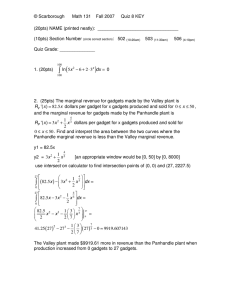
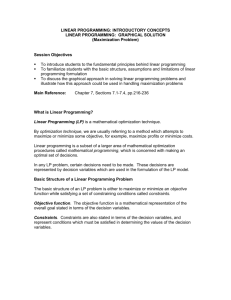

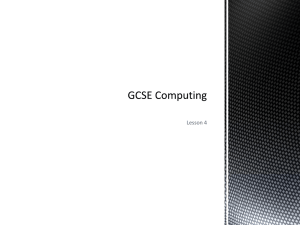
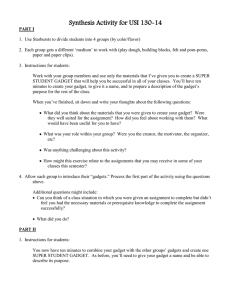
![[#BAM-1384] Error was thrown when creating gadget in](http://s3.studylib.net/store/data/008624423_1-6f089c8fcdd44b7b0c03215bf260bf0e-300x300.png)
